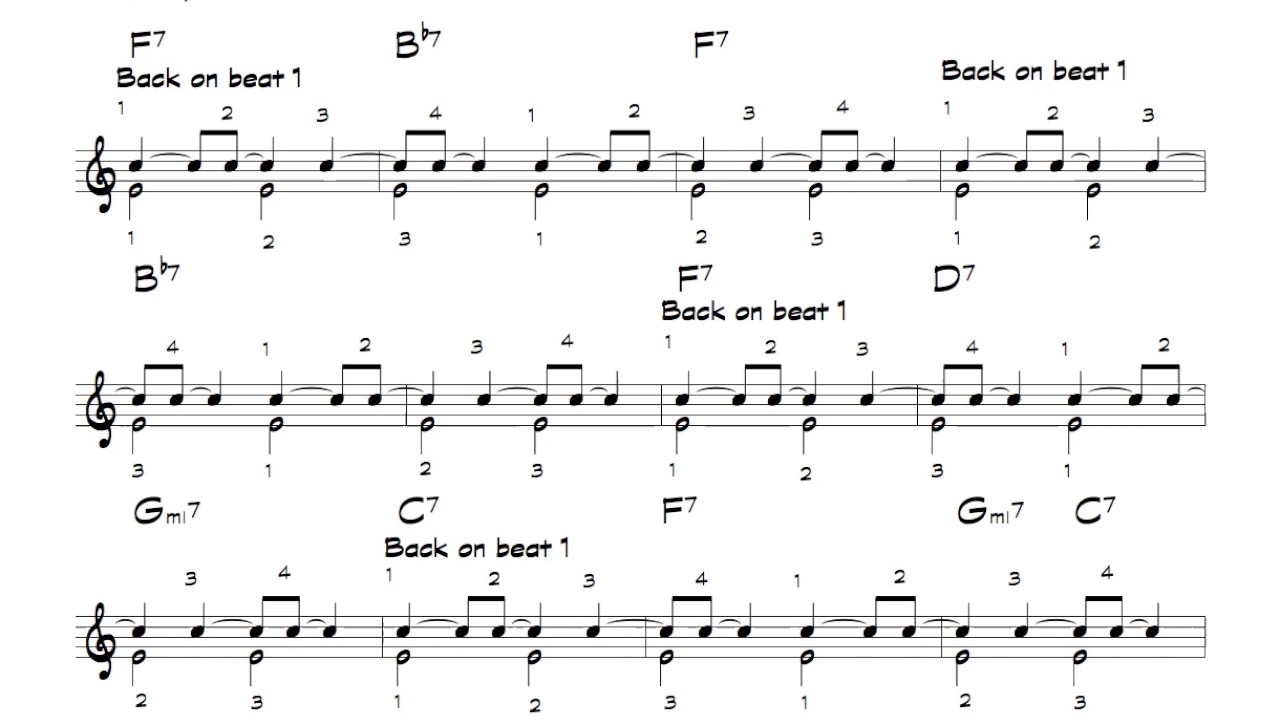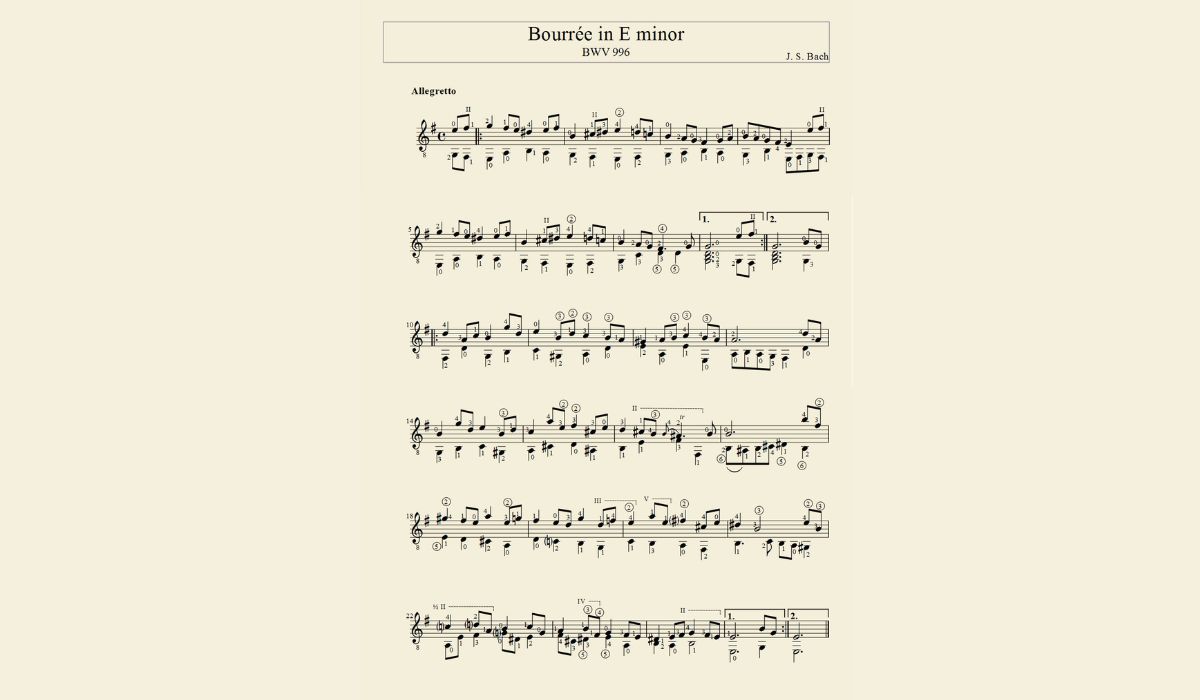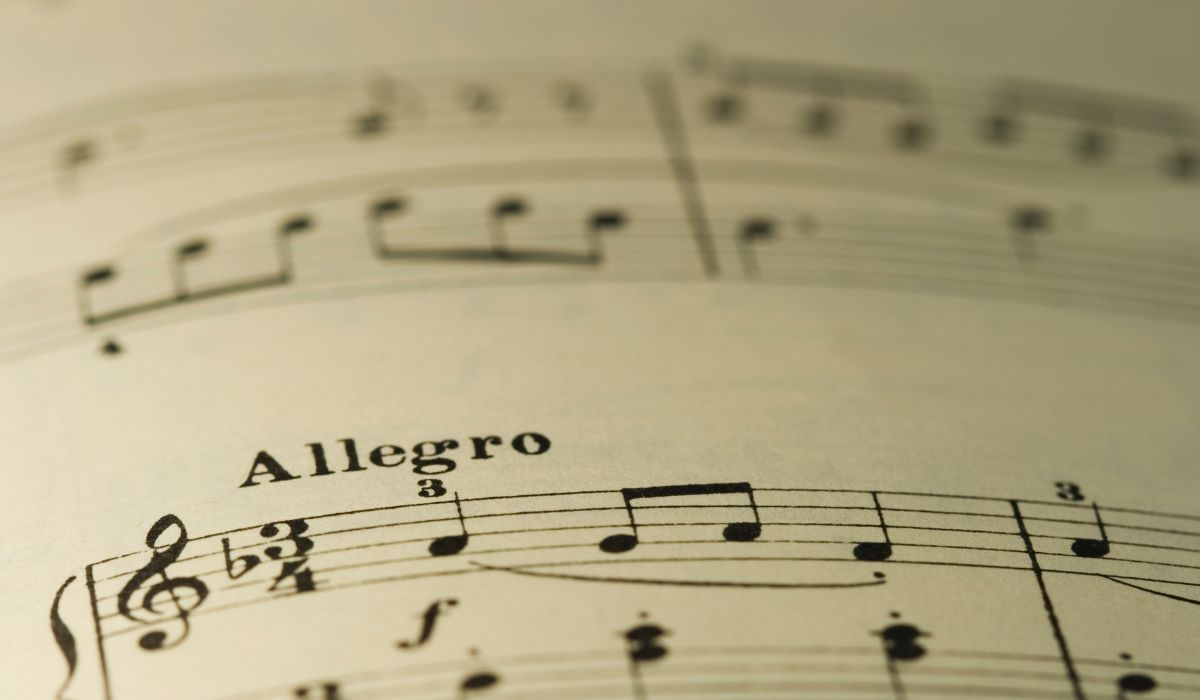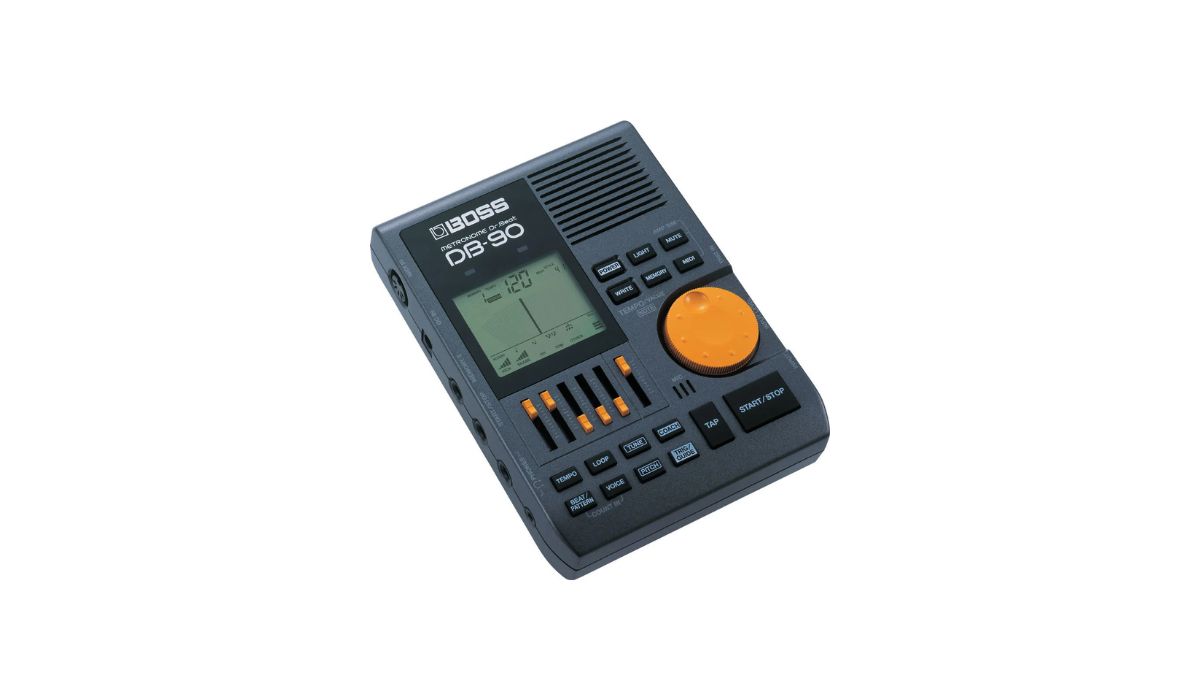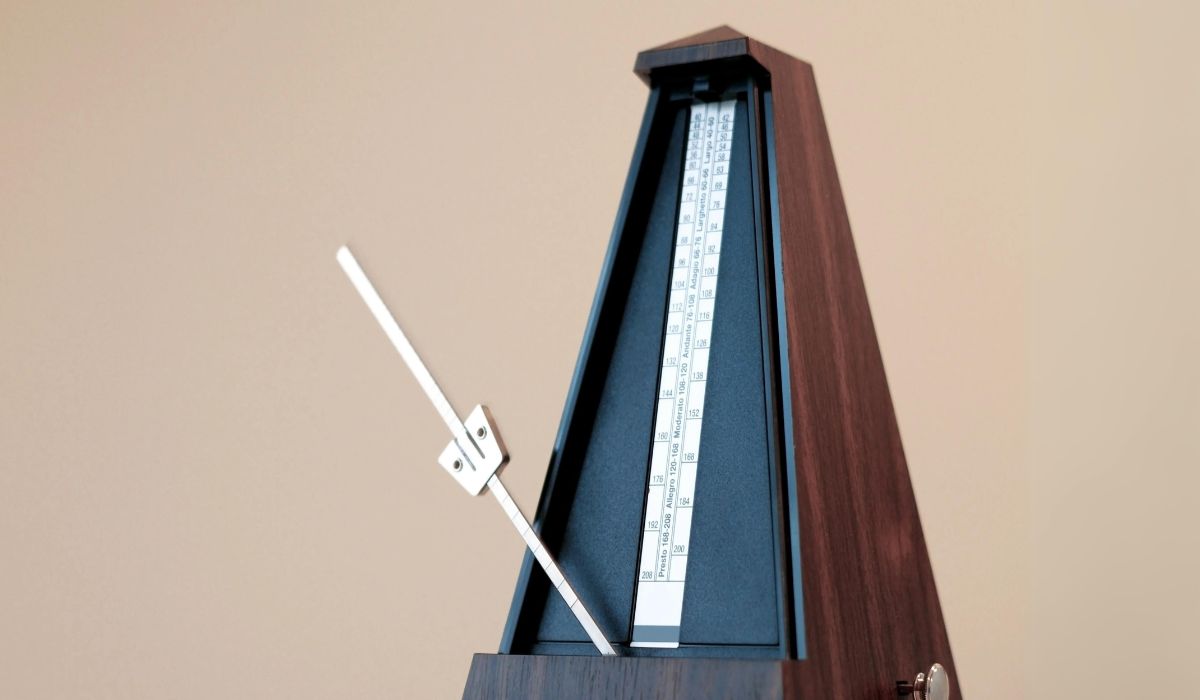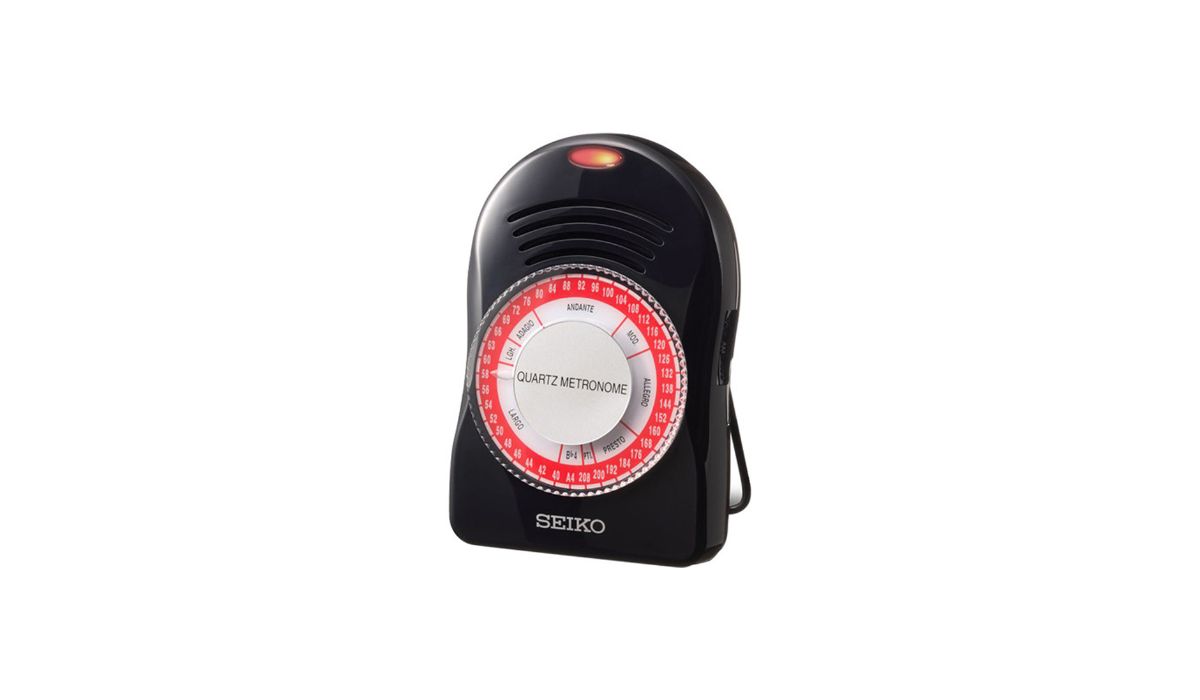Home>Production & Technology>Metronome>What Is A Bell On A Metronome
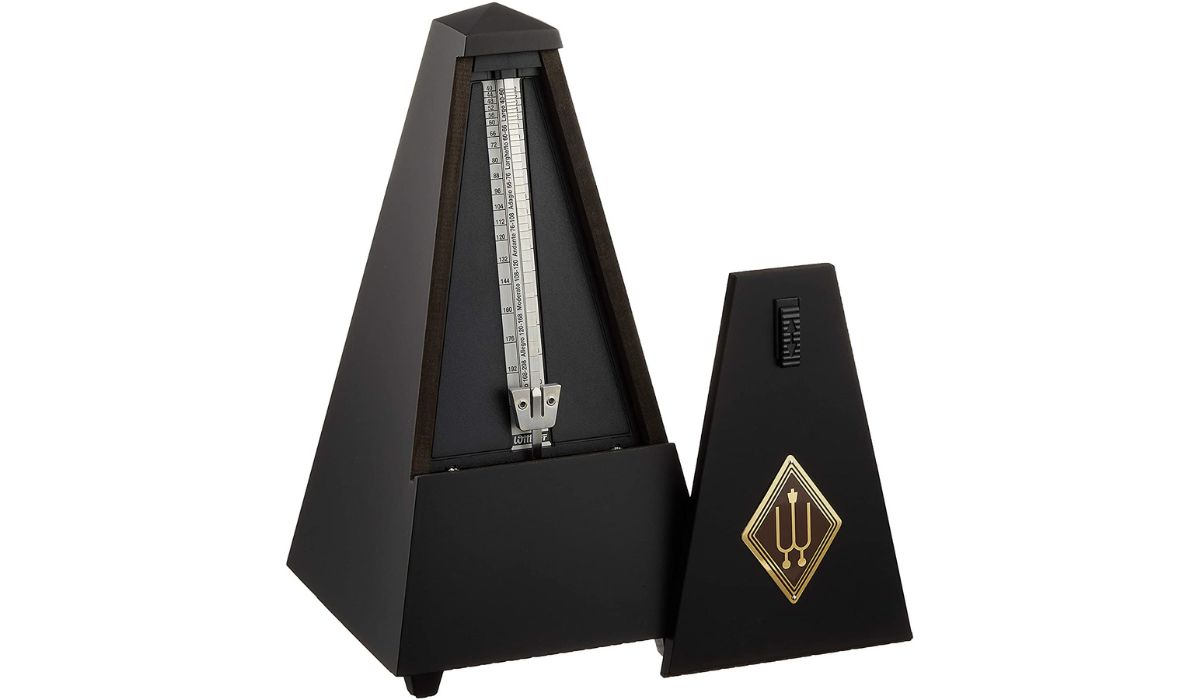

Metronome
What Is A Bell On A Metronome
Modified: January 22, 2024
Discover the purpose and function of a bell on a metronome, a must-have tool for musicians. Get insights into how it enhances rhythm and timing.
(Many of the links in this article redirect to a specific reviewed product. Your purchase of these products through affiliate links helps to generate commission for AudioLover.com, at no extra cost. Learn more)
Table of Contents
Introduction
When it comes to musical performance, timing is everything. Whether you are a beginner or a seasoned musician, maintaining a consistent tempo is crucial. This is where a metronome comes into play. A metronome is a device that helps musicians keep time by providing a steady and audible beat. But what exactly is a metronome? And what role does it play in the world of music?
In its simplest form, a metronome is a device that produces an audible click or beep at a specific tempo. It is commonly used by musicians, composers, and music students to develop and improve their sense of rhythm and timing. The metronome’s constant and precise beat provides a reference point for musicians to stay on track and maintain a consistent tempo throughout a piece of music.
The invention of the metronome is credited to Johann Nepomuk Maelzel, a German inventor, in the early 19th century. Since then, metronomes have come in various shapes, sizes, and functionalities. From traditional mechanical metronomes with a swinging pendulum to modern digital metronomes with LED displays, there is a wide range of options available to musicians today.
So why is a metronome such an essential tool for musicians? The answer lies in the importance of rhythm and tempo in music. Whether you are playing an instrument, singing, or even dancing, having a strong sense of rhythm is crucial to a captivating and cohesive performance.
A metronome helps musicians develop their rhythm and timing skills by providing a constant beat that acts as a reference point. It allows musicians to practice at different tempos, gradually increasing the speed as they become more proficient. By practicing with a metronome, musicians can improve their precision, accuracy, and overall musicality.
In addition to helping musicians maintain a steady tempo, metronomes also serve as a valuable practice tool for musicians to develop their sense of musical phrasing. By subdividing the beat and practicing with different accents, musicians can enhance their understanding of musical structure and perform with more expression.
Overall, the metronome plays a crucial role in music education and performance. It helps musicians improve their rhythm, timing, and overall musical skills. It also serves as a valuable tool for composers and arrangers to notate and communicate tempo markings in their compositions.
In the following sections, we will explore the various components of a metronome and take a closer look at one particular element that sets certain metronomes apart – the bell.
Definition of a Metronome
A metronome is a device used in music to provide a steady and consistent beat. It serves as a timekeeping tool, helping musicians maintain a consistent tempo while practicing or performing. The word “metronome” is derived from the Greek words “metron,” meaning “measure,” and “nomos,” meaning “law.”
Traditionally, metronomes were mechanical devices that used a pendulum to produce a rhythmic ticking sound. The speed of the ticking sound could be adjusted by moving a weight along the pendulum arm, allowing musicians to set the desired tempo. However, with advancements in technology, digital metronomes have become more prevalent. These electronic devices use LED screens or audio signals to provide the tempo, offering more flexibility and features than their mechanical counterparts.
Metronomes are available in a variety of shapes and sizes. Some are small and portable, designed for on-the-go musicians, while others are larger and more suited for use in a studio or classroom setting. They can be handheld or placed on a stand, providing convenience and ease of use for musicians of all types.
While the main function of a metronome is to provide a steady beat, modern metronomes often come with additional features. These can include the ability to change the time signature, adjust the volume or pitch of the beat, and even provide different sounds or rhythms for more advanced practice sessions.
A metronome can be an invaluable tool for musicians at every level, from beginners just starting to develop their sense of rhythm to professional musicians looking to refine their timing. By utilizing a metronome, musicians can establish a strong foundation in timing and develop a heightened sense of rhythmic accuracy.
In the next section, we will delve into the purpose of a metronome and the benefits it offers to musicians.
Purpose of a Metronome
The purpose of a metronome is to assist musicians in developing and maintaining a consistent tempo in their music. But its benefits extend beyond just keeping time. Let’s explore the key purposes of a metronome:
- Establishing Rhythm: One of the primary purposes of a metronome is to help musicians establish a strong sense of rhythm. The metronome provides a steady beat, acting as an external timekeeper. It helps musicians internalize the rhythm and play or sing in sync with the beat.
- Improving Timing: Timing is crucial in music, and a metronome is an invaluable tool for improving timing skills. By practicing with a metronome, musicians learn to play or sing accurately in relation to the beat. The metronome ensures that they maintain a consistent tempo and avoid rushing or dragging the music.
- Building Precision: Playing or singing with precision is essential for creating a polished performance. A metronome aids in developing precision by enforcing a strict and consistent tempo. It helps musicians refine their technique, articulation, and phrasing, leading to cleaner and more controlled performances.
- Developing Speed: For musicians looking to increase their speed and dexterity, a metronome is an effective practice tool. By gradually increasing the tempo on the metronome, musicians can push their boundaries and build up their speed over time. This methodical approach allows for incremental progress without sacrificing accuracy.
- Enhancing Musicality: A metronome is not just about mechanical precision; it can also enhance a musician’s sense of musicality. By practicing with different subdivisions of the beat and experimenting with accents and dynamics, musicians can bring more expression and musical interpretation to their performances.
By using a metronome regularly, musicians can develop a strong foundation in timekeeping and rhythm. It trains their internal clock and helps them become more reliable, consistent, and versatile performers. Whether it’s practicing scales, learning complex rhythms, or preparing for a live performance, a metronome is an invaluable tool for musicians at every stage of their musical journey.
Now that we understand the purpose of a metronome, let’s dive into the components that make up this essential device.
Components of a Metronome
A metronome consists of several key components that work together to provide musicians with a reliable and precise rhythmic reference. Understanding these components is essential for using a metronome effectively. Let’s explore the main components of a metronome:
- Tempo Dial/Control: The tempo dial or control is the mechanism that allows musicians to adjust the speed or tempo of the metronome. It can be in the form of a dial, buttons, or a digital interface, depending on the type of metronome. This component is crucial for setting the desired tempo for practice or performance.
- Time Signature Selection: Many modern metronomes come equipped with the ability to select different time signatures. This component allows musicians to set the appropriate time signature for their piece of music, such as 4/4, 3/4, or 6/8. By selecting the correct time signature, the metronome will provide the appropriate rhythmic subdivision.
- Indicator/Ticker: The indicator or ticker is a visual or auditory representation of the beat produced by the metronome. In mechanical metronomes, the indicator is typically a swinging pendulum that moves back and forth to mark each beat. In digital metronomes, the tick can be displayed on an LED screen or produced as an audible sound.
- Volume Control: The volume control allows musicians to adjust the loudness of the metronome’s tick or click. This is particularly useful in different practice environments. Musicians can increase the volume for individual practice sessions or decrease it in situations where a quieter metronome sound is desired.
- Subdivision Options: Some metronomes offer the option to choose different subdivisions of the beat. This allows musicians to practice with greater precision and accuracy. Common subdivisions include eighth notes, triplets, and sixteenth notes. By practicing with different subdivisions, musicians can improve their rhythm and timing skills.
In addition to these key components, modern metronomes often come equipped with extra features and functionalities. These include built-in memory to store tempo settings, LED displays for visual feedback, and the ability to save and recall tempo presets. Some advanced digital metronomes even include additional rhythmic patterns and accents to enrich practice sessions.
Understanding the components of a metronome helps musicians utilize this tool effectively. By adjusting the tempo, selecting the appropriate time signature, and using subdivisions, musicians can tailor their metronome practice to meet the specific requirements of their music. Now that we have explored the components, let’s delve into one distinctive feature found in some metronomes – the bell.
The Bell on a Metronome
While the core function of a metronome is to provide a consistent beat, some metronomes feature an additional element that sets them apart: a bell. The bell on a metronome is a small attachment or mechanism that produces a distinctive sound at the beginning of each measure or bar. Let’s explore this unique feature in more detail.
The bell on a metronome is typically located on the top or side of the device and is activated by a specific setting or switch. When the metronome is set to include the bell, it will produce a crisp and audible chime, signaling the start of each measure. This helps musicians orient themselves within the music and maintain their place in the composition.
The purpose of the bell on a metronome is twofold. First, it provides a clear audible marker to help musicians keep track of the beats in each measure. This is particularly useful when musicians are practicing complex time signatures or musical arrangements with frequent changes in tempo or rhythm. The bell helps musicians stay grounded and prevents them from getting lost in the music.
Secondly, the bell can serve as a valuable tool for musicians learning to develop their sense of musical phrasing. By accenting the downbeat with the bell sound, the metronome helps musicians emphasize the beginning of each measure and understand the underlying structure of the music. This aids in musical interpretation and expression, allowing musicians to bring their personal style and artistry to their performances.
It is worth noting that not all metronomes have a bell feature. Some metronomes focus solely on providing a consistent beat without the added auditory cue of a bell. The presence of a bell on a metronome is often determined by personal preference or the specific needs of the musician.
Whether a musician chooses to use a metronome with a bell or a traditional metronome, the essential function remains the same – to provide a steady and consistent beat. The bell is an additional feature that can enhance the rhythmic precision and musicality of a performance.
In the next section, we will explore the function and importance of the bell on a metronome in more detail.
Function of the Bell
The bell on a metronome serves multiple functions that enhance the overall effectiveness and usability of this musical tool. Let’s explore the key functions of the bell on a metronome:
- Measure Marker: One of the primary functions of the bell is to mark the beginning of each measure. By producing a distinct sound at the start of each bar, the bell helps musicians keep track of their progress within the music. This feature is particularly helpful when practicing compositions with complex time signatures or frequent tempo changes.
- Rhythm Reinforcement: The bell on a metronome reinforces the rhythmic structure of the music. By accenting the downbeat of each measure, the bell provides a clear auditory cue that aids in maintaining a consistent tempo and rhythm. This helps musicians internalize the pulse of the music and develop a strong rhythmic sense.
- Phrasing Guide: The bell serves as a guide for musicians to develop their sense of musical phrasing. By accenting the beginning of each measure, it helps musicians understand and interpret the underlying musical structure. The bell’s distinctive sound can inspire musicians to shape their performance with expressive nuances and emphasize the musical phrases.
- Auditory Reinforcement: The addition of a bell sound to the metronome provides an extra layer of auditory reinforcement during practice sessions. While the metronome’s regular click or beep provides a precise beat, the bell creates a more noticeable and memorable sound that helps musicians stay engaged and focused on their playing.
- Performance Preparation: Utilizing a metronome with a bell during practice can better prepare musicians for live performances and ensemble playing. The bell mimic the cues and signals that musicians often encounter in group settings, such as a conductor’s downbeat or the chime of an orchestral bell. Familiarity with these auditory cues helps musicians synchronize their playing and enhances their ability to follow the tempo cues in a performance setting.
Overall, the bell on a metronome serves as a valuable feature for musicians looking to refine their timing, develop their musicality, and prepare for performance. It acts as a measure marker, reinforces rhythm, guides phrasing, provides auditory reinforcement, and aids in performance preparation. The presence of a bell on a metronome offers musicians an additional tool to enhance their practice sessions and achieve greater precision and musical expression.
Now that we understand the function of the bell on a metronome, let’s explore its importance in the context of music education and performance.
Importance of the Bell
The bell on a metronome holds significant importance in the realm of music education and performance. Its presence offers several advantages that contribute to a musician’s growth and proficiency. Let’s explore the key aspects that highlight the importance of the bell:
- Clear Measure Identification: The bell provides a clear auditory reference point for musicians to identify the beginning of each measure. This is particularly valuable when musicians are working on intricate compositions with complex time signatures or irregular rhythms. It ensures that musicians stay aware of the musical structure and prevents potential confusion or timing errors.
- Enhanced Musical Phrasing: The bell acts as a guide for musicians to develop their sense of musical phrasing. By accenting the downbeat, it helps musicians understand the natural flow and contour of the music. This allows them to shape their performance with appropriate dynamics, articulation, and expression, resulting in a more engaging and musically engaging interpretation.
- Precision and Timing: The bell reinforces the precise timing and rhythmic accuracy of a musician’s playing. The distinct sound aids in maintaining a steady tempo and keeping musicians aligned with the beat. This precision is crucial for ensemble playing, where musicians need to synchronize their playing with other performers and follow the conductor’s cues.
- Performance Readiness: By practicing with a metronome that has a bell, musicians can better prepare for live performances. The bell mimics the cues and signals commonly encountered in ensemble settings or performances with a conductor. Familiarity with these auditory cues helps musicians anticipate and respond to tempo changes and transitions, contributing to a seamless and polished performance.
- Improved Internal Musical Pulse: The consistent presence of the bell trains musicians to develop a strong internal musical pulse. By regularly practicing with the metronome’s bell, musicians refine their internal sense of rhythm and timing. This skill translates into more confident and assured performances, even when a metronome or external timing reference is not present.
The bell on a metronome plays a significant role in shaping a musician’s overall musicality and performance skills. It provides clarity, promotes musical expression, cultivates precision, fosters ensemble coordination, and hones the internal musical pulse. Incorporating the bell feature into metronome practice sessions allows musicians to refine their artistry and deliver captivating performances.
In the next section, we will wrap up our exploration of the metronome and its significance in the world of music.
Conclusion
The metronome, with its various components and features, is an invaluable tool for musicians of all levels. It serves as a reliable timekeeper, helping musicians develop and maintain a consistent tempo, precision, and timing. The addition of a bell to a metronome further enhances its functionality and contributes to the overall musical experience.
By incorporating a metronome into practice sessions, musicians can improve their rhythm, timing, and overall musical skills. The steady beat provided by the metronome trains their internal sense of pulse and helps them develop a strong foundation in timekeeping. The bell on a metronome adds an auditory cue that aids in measure identification, enhances phrasing, and prepares musicians for ensemble playing.
Furthermore, the metronome cultivates discipline and focus in musicians, as it requires them to play in precise alignment with the beat. This disciplined approach not only improves technical proficiency but also instills a sense of musicality and expressiveness in their performances.
Whether you are a beginner learning the basics of rhythm or a professional seeking to refine your timing, the metronome is a must-have tool in your musical journey. It provides the structure and guidance needed to unlock your potential and elevate your playing.
So, next time you take out your metronome, take advantage of its components, utilize the bell feature, and embrace the precise and consistent beat it offers. Let it be your companion as you strive for musical excellence, expanding your skills and honing your artistry.
In conclusion, the metronome, with its various components and the addition of the bell, serves as an invaluable resource for musicians to develop their timing, precision, and musical expression. Embrace the metronome as your guide, and let its rhythmic cadence propel you towards mastery in the wonderful world of music.


